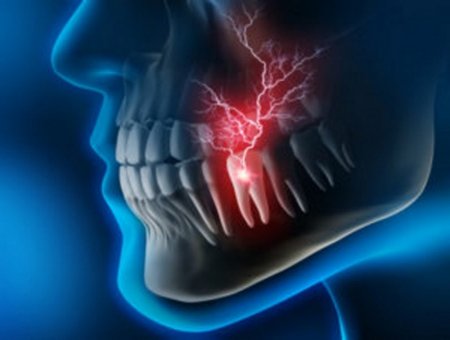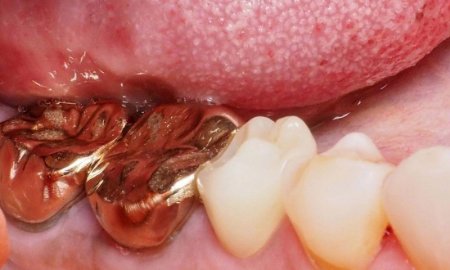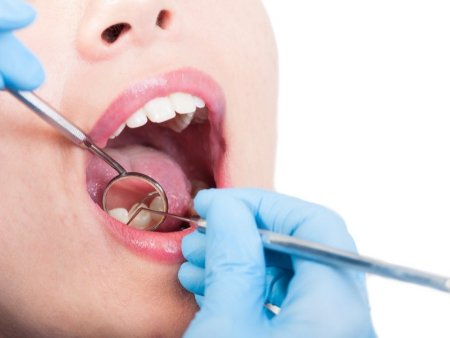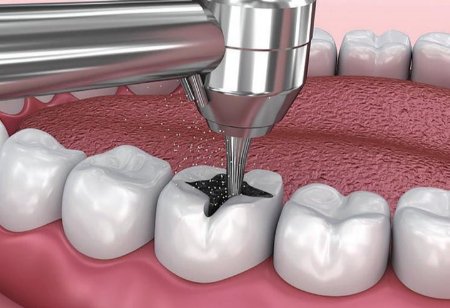
Oral galvanism is a phenomenon that creates a weak electric current in the mouth.
What is oral galvanism or the sensation of electric shock from teeth?
You may not have heard of oral galvanism before, but this phenomenon can affect your oral health and even your whole body. Dentists believe that awareness of the risks from small electric shocks in the mouth is essential for everyone, especially those with fillings or crowns. In this article, we thoroughly examine oral galvanism and its prevention methods.

The main cause of galvanism is the presence of different metals in the mouth.
What is oral galvanism?
Have you ever felt a sudden electric shock in your mouth when biting on a spoon or aluminum foil? You may have heard this experience referred to as “battery mouth.” This unpleasant sensation is actually called oral galvanic response. When different metals such as fillings, crowns, or implants are present in the mouth and come into contact with saliva, a weak electric current can be generated, causing this sensation. This electric current results from a chemical reaction between the metals and the saliva.
Symptoms of oral galvanism
Have you ever felt a metallic taste or burning sensation in your mouth while eating or drinking? This may indicate a problem known as oral galvanism. Symptoms of this condition can include:
• Strange taste: You may experience a metallic or salty taste in your mouth.
• Burning or tingling sensation: Sometimes, people with oral galvanism feel a burning or tingling in their mouth, as if something is crawling on their tongue.
• Tooth sensitivity: Your teeth may become more sensitive to cold or heat.
• Skin rashes: In some cases, oral galvanism can cause rashes around the mouth.
• Pain: Pain in or around the mouth can also be a sign of oral galvanism.
One of our patients felt like an electric current was passing through her face and body, describing it as if she was experiencing a “short circuit”!
Note:If you experience any of these symptoms, it is best to see your dentist to diagnose the exact cause and prescribe appropriate treatment.

Saliva acts as a small battery in this phenomenon.
What are the effects of galvanic shock?
Galvanic shocks release electrical charges that disrupt cellular communication, leading to physical and neurological problems.
Physical problems
Bacteria thrive in the environment of oral galvanism and accumulate in areas where the electric current discharges, leading to increased plaque buildup in these areas. On the other hand, more bacteria mean more production of acidic waste, which makes your saliva more acidic and increases the strength of galvanic shocks.
Neurological problems
Galvanic shocks also cause various neurological issues, including irregular heartbeat, chronic headaches, numbness or a pins-and-needles sensation, burning tongue, dizziness, insomnia, drowsiness, memory disturbances, and confusion.
How to prevent galvanic shock?
If you want to prevent galvanic shocks, it is advised to avoid metals in dentistry. Non-metal crowns and implants can ensure better oral health and overall wellness.
Non-metal implants
Instead of metal implants, we recommend choosing non-metal zirconia implants. Zirconium is a durable, biocompatible material that is used in holistic dentistry for dental bases, crowns, implant bases, and more. Its color is similar to your teeth and does not cause allergies or galvanic shocks.
Non-metal fillings
Amalgam fillings contain mercury, which is toxic and causes galvanic shocks. They also contain other metals like silver, tin, copper, and zinc. Therefore, it is advisable to use non-toxic, non-metal, mercury-free, and biocompatible fillings. Whether they are inlays, onlays, or crowns, there are much safer and better alternatives to using metals in the mouth.

With proper treatment, one can completely eliminate oral galvanism.
Treatment of oral galvanism
Oral galvanism, that unpleasant sensation of electric shock in the mouth, can be caused by the presence of various metals in the mouth and their reactions with each other. Fortunately, there are effective treatments for this issue. The main approaches to treating oral galvanism include:
Removal of metal restorations:
• Replacement with biocompatible materials: The best and most sustainable solution is to replace metal restorations like amalgam and metal crowns with biocompatible materials. These materials not only prevent galvanism but also have better compatibility with oral tissues.
• Alternative materials: Materials like ceramics, zirconia, and non-metal composites are excellent options for replacing metal restorations.
• SMART method: If there’s a need to remove amalgam, the SMART (Safe Mercury Amalgam Removal Technique) is performed with specific health protocols to prevent the release of mercury vapors.
Creating insulation between metals:
• Using insulating materials: In some cases, it might not be possible to completely remove metals. In such cases, a dentist can prevent direct contact between metals using insulating materials.
• Protective crowns: Placing protective crowns over metal restorations can help reduce electrical flow and consequently alleviate symptoms of galvanism.
Changing dietary habits:
• Reducing acidic food intake: Acidic foods can aggravate chemical reactions in the mouth. Therefore, reducing the intake of acidic foods like citrus can help lessen symptoms of galvanism.

The sensation of electric shock is the most common symptom of oral galvanism.
Frequently asked questions about galvanic shocks
1. Is galvanic shock painful?
Some patients experience temporary pain after a galvanic shock.
2. Is oral galvanism dangerous?
In most cases, oral galvanism is not a serious health risk and is mostly an annoying problem. However, in some instances, it can cause metal corrosion and release harmful ions in the mouth.
3. How long does it take for the symptoms of galvanism to go away after treatment?
The recovery time depends on various factors including the number and type of metal restorations, treatment method, and your body’s response.
4. Can oral galvanism be prevented?
The best way to prevent oral galvanism is to use biocompatible materials for dental restorations. Additionally, regular visits to the dentist and routine check-ups can help catch problems early and prevent them from worsening.
Final thoughts
Oral galvanism, although unknown to many, can have a significant impact on people’s quality of life. This phenomenon, caused by the presence of various metals in the mouth and their reactions, can lead to annoying symptoms such as electric shock sensations, pain, and a metallic taste in the mouth. Fortunately, with advancements in dentistry, one can fully resolve this issue by replacing metal restorations with biocompatible materials. Therefore, if you suffer from this problem, it is advisable to consult a specialist dentist who can examine your oral condition and prescribe the best treatment approach. By choosing the right materials and receiving timely treatments, you can enjoy a healthy mouth free from discomfort.
Compiled by:Health section of SelMagz







